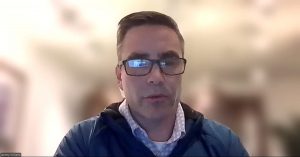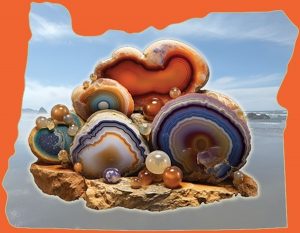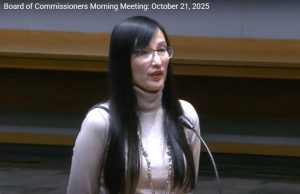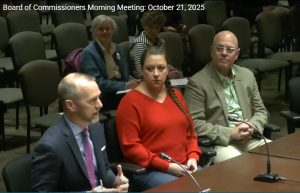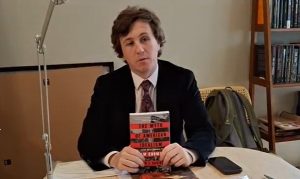LTD partners with OSU to apply AI to transit
7 min read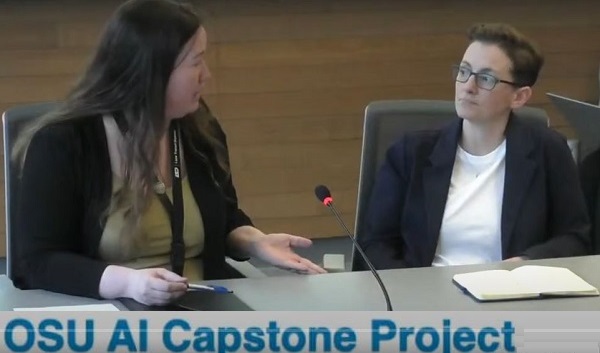
Presenter: Lane Transit District explores artificial intelligence, to see if AI can help the agency boost scores for its performance measures. They’re all available at LTD.org/Performance. Here’s Chief Executive Officer Jameson Auten:
Jameson Auten (LTD, CEO): We recently did a project with Oregon State University. We have U of O right in our backyard, but we wanted to play with the engineers as well, form a relationship there.
[00:00:27] And one of the things that we were looking at was, how does artificial intelligence, and with the data that we currently collect, how can that help impact operations moving forward?
[00:00:40] Presenter: LTD’s Chief Performance Officer Amy Reichert:
[00:00:44] Aimee Reichert (LTD, chief performance officer): Policy is important with AI. It’s a big space and there’s a lot you can do. So that’ll give us, the policy can help kind of ground us in our strategic investment, how we want to use it at LTD. Continue the partnerships for sure: Jim Cupples, local genius Matt Porter, …the OSU professor, just, I mean, partnering with computer science and transit and the private sector space as well.
[00:01:12] I feel like this is like a wish I made 20 years ago and it’s coming true, so that’s really exciting. And then we are kind of keeping an eye on the promising applications, specifically for transportation. Predictive maintenance is definitely one. When you think about internet of things, you can put any object somewhere on the bus, and it’s smart. So it can tell you specific details about how the tires are operating. So you’re getting ahead of the problem.
[00:01:42] That’s really interesting. Basic business efficiencies: Is this meeting using AI for notes? I mean, I’m looking over at Legal, I’m not committing to any of these ideas. Our first step is a policy, but yeah, notes, our mobile video: We’re bringing on a huge mobile video solution that is going to help improve safety and provide a better experience for our customers. And it has AI capability.
[00:02:08] So there’s a lot of good stuff ahead with AI and this will only continue, but we can look forward to seeing a policy soon. I think we’ll go through the Strategic Planning Committee first and then bring it to you all this fall. This is the goal.
[00:02:22] Presenter: Introducing Community Liaison Sarah Koski, Jameson Auten.
[00:02:28] Jameson Auten (LTD, CEO): So Sarah was instrumental in getting that set up. How we move forward will be with Amy’s crew. So, Sarah, if you want to update the board on how this started and what we accomplished.
[00:02:38] Presenter: Community Resource Liaison Sarah Koski:
[00:02:40] Sarah Koski (LTD, community resource liaison): This project came through an organic partnership with a good friend of mine, Jim Cupples, who is now a National Economic Recovery Fellow and his good friend Matthew Porter, our local genius.
[00:02:53] And so Matthew and Jim have been overseeing projects through the Oregon State University’s AI division and Machine Learning division in the sense that we have students coming up through the state of Oregon that are learning AI and AI technology five years in advance of what is currently being published and out now.
[00:03:15] Jim had seen the work that we have been doing with homelessness and advocating for vulnerable populations. His initial goal was to get information about shelters, vulnerable populations, and combine that with information about our ridership, you know, de-escalation tactics of our public safety.
[00:03:34] We weren’t able in time to get the homelessness data. So what the students did (and thanks to Aimee and Barb of the technology team) was the students received a giant data dump. If you could think of like every piece of sugar and popcorn and candy and trail mix you could ever imagine coming out of Costco pouring it all into a bowl and not outlining what that is and giving it to the students and saying, ‘Good luck, hope you know what you’re doing,’ for students that didn’t know transit, right?
[00:04:06] What the students came up with in four months is absolutely incredible. So they were able to play with the information. We had Barb and Amy on call if they had any questions. Jim and Matt both were supportive. They used Vertex AI, Auto-PyTorch, Google AI technology. And Google was expensive.
[00:04:27] So enter in Jim and Matt had a partnership with the philanthropy and social service partner from Google outside of Bend. Her name is B—. B— waived $4,000 worth of credits and only charged the project $1,000, which was comparable to what they did.
[00:04:43] What we found was really incredible. So understanding that there are a lot of businesses right now in the industry of trying to combine mobility management and transit and AI. Now, we understand these students had no prior knowledge to transit whatsoever. And in four months, they were able to take data of all of those—that Costco cookie mix, right? And make some pretty darn good cookies.
[00:05:09] And so what they found was they could predict at any time within the future ridership numbers with, like, a plus or minus standard deviation of 5%. They could find within 95% accuracy what our numbers were. And what it was based on, literally, was the price of eggs. And so these individuals, so both Matt and Jim did public records request, public databases, air flow, air quality, wildfire, arrests, all of this. So not only this huge cookie bin, but 158 different markers and put those in with AI technology as well.
[00:05:53] They provided us with heat maps of different mapping. They found all sorts of different things about the work in facilities and like reports on how quick buses could get fixed, how buses weren’t fixed, and it caused a lot of excitement with the students.
[00:06:13] In fact, there was three students who came on site to present. (Pete, thank you so much for being there.) One student was so excited about the project. He’s been working remote from South Dakota, literally flew in for an hour worth of a presentation. B— came in from Bend.
[00:06:30] And what we’re seeing, and this is the really cool part of this project, right? And I’m so grateful for Aimee is, this is an evolution and a step in the right direction. Not only is it supporting bright and youthful and active minds, it’s opening up the door for innovation technology in parallel in conjunction with mobility management. But these students are so excited that they want to do so many more projects with LTD.
[00:06:54] Matt Porter, aka our local genius, worked with Barb because Barb was like, ‘Man, I have all this data and there’s different variables that I want to add in there. I don’t know, how could we potentially buy this in the future?’ And Matt said, ‘Let me code it for you.’
[00:07:10] And Matt, as a gift to LTD, he actually took a full week off of work programmed for us to be able to use this machine learning.
[00:07:18] So they’ve opened up all of the coding and the sourcing for the maps that they did on GitHub, which basically is like an open source domain so if we do want to use AI in the future, we have a foundation to start…
[00:07:32] When B— came into town from Bend, she was so heart-wound by just how excited the students were and how invested both not only the presentation to us but the questions and everything coming back to the student that she wants to follow up with additional meetings on how Google can partner with Lane Transit District and one of the things that Google is working on now is machine learning and AI video generation. So she has offered, like, different things.
[00:08:02] For example I’m working on a project now where we’re looking at all of the public bathrooms and water fountains. And we’re going to be sending volunteers out to kind of look at that. She and her machine learning could do that within seconds, right? And so she had stated that she’s very excited at the potential of opening up some technology that not a lot of people have access to, to LTD, because of the support that we gave to the students and just that really fun capstone project that they did. Thank you.
[00:08:32] Presenter: On the LTD board, Susan Cox:
[00:08:34] Susan Cox (LTD, board): Thank you for the presentation and the project. That sounds wonderful. Who else is doing this? Or are we sort of out there in the front?
[00:08:43] Presenter: Chief Performance Officer Aimee Reichert:
[00:08:45] Aimee Reichert (LTD, chief performance officer): Yeah, we actually invited the director of Information Technology for the city to the presentation with the students, they’re interested. And there’s lots of transit organizations ahead of us across the country, so we can look at them as well for ideas of how it’s being applied.
[00:09:06] Susan Cox (LTD, board): Exciting, thank you.
[00:09:10] Presenter: Jameson Auten:
[00:09:11] Jameson Auten (LTD, CEO): I think the current content this subject areas is really exciting. It’s cutting edge, a lot of work to be done. But I think for the organization, the partnership with the university there is a pretty good move, pretty good stepping stone for us to be able to tap into the next generation of business owners. And entrepreneurs are starting to think and it allows us starting to think along with them and to dream with them. What was Tom Schwetz? Co-create—to co-create along with them. (We’ll bring Tom into the room.) So looking forward to that and moving the relationship forward. So thank you.
[00:09:52] Presenter: LTD partners with Oregon State to look at how artificial intelligence can improve the agency’s performance.
